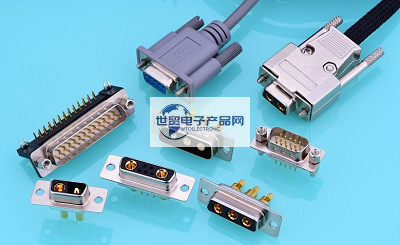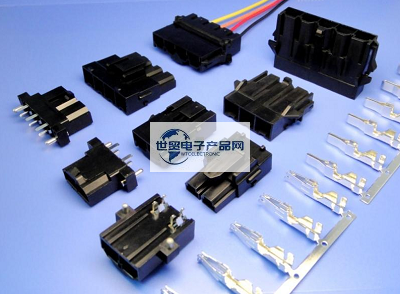Categorization:Product Information
The insulator materials of the connector usually include: PBT, NYLON, ABS, PC, LCP and other materials as shown in Appendix 1, but in principle, materials with better flame resistance are used. a.PBT material: Generally, PBT material is commonly used with 20-30% glass fiber, which has crack resistance, impact resistance and electricity resistance. It has good wear resistance, low friction coefficient, good self-lubrication effect, and good oil resistance and chemical resistance. It has good dielectric strength at high temperature and humidity. Its shrinkage ratio is between 0.6% and 3.0%, and its temperature resistance is about 230 DEG C. Good moldability and flame resistance. It is a commonly used rubber compound for connector products. b. NYLON66, NYLON6T, PC and LCP materials: the shrinkage ratio is 1.0%-0.3%, and the temperature resistance is higher than that of PBT. Commonly used, NYLON66 has temperature resistance of 260 ℃--280 ℃, NYLON6T has temperature resistance of 280 ℃--300 ℃, and LCP has temperature resistance of 290 ℃--320 ℃. However, it has high water absorption and is generally used in products with high temperature resistance and less PITCH (such as SMD, HOUSING, PLCC and other products). C. ABS material: has good impact resistance and toughness, oil resistance, wear resistance, easy molding, hard It has good properties, good rigidity, and has a temperature resistance of about 100 °C. It is generally used in auxiliary products in connectors. 2. Common defects in injection molding and their causes Common molding defects are as follows: plastic parts have black spots or black liquor, dirty surface, overflow, incomplete plastic molding, bubbles or burning, deflation, stitching or plastic parts are tightened in the mold and other defects. The main reasons are divided into three parts: injection molding machine factors, mold factors and rubber factors. 3. Connector contact composition and performance Material of joint body: The plug is made of metal joint body material. Generally, it is mainly brass in principle, but it is particularly required that the number of plugging and unplugging is extremely high, and phosphor bronze, beryllium copper, etc. can be used for a long life. The following is an introduction to the types and properties of copper materials currently in the industry. 1. Brass---an alloy of copper and zinc, the common color varies depending on the zinc content. a. Brass----containing 25 ~ 35% zinc, most suitable for room temperature processing b. Brass----containing 35% ~ 45% tin, most suitable for room temperature processing. Copper plates and copper rods sold on the market All belong to it. 2. Bronze----An alloy of copper and tin, its color varies depending on the tin content. Generally speaking, copper alloys other than brass are called bronze phosphor bronze-adding phosphorus to bronze has some friction resistance, but if there is too much phosphorus, it will be difficult to cast. Its composition is 8 ~ 12% tin, phosphorus 0.5 ~ 1.5%.

------------------------------------------------------------------------------------------------------
Contact material selection Contacts can be made of any of several alloys. The specific selection depends on the type of contact, the frequency of plugging and unplugging, and the electrical and environmental conditions under which the connector operates. Some commonly used materials and their applications are as follows: Brass ─ Although brass is a material with good electrical conductivity, it is easy to deform and fatigue rapidly after repeated bending. It is usually used as a fixed contact in inexpensive connectors, or as other metal parts in connectors. Connectors with brass contacts should not be used where excellent flexibility is required. Of course, due to its low cost, brass can still be competently used as a contact piece in many places, and phosphor bronze-phosphor bronze is harder than brass, while maintaining long-term elasticity. It is often used as a material for contacts with operating temperatures below 300 °C. For most connectors with low plugging and unplugging frequency, or where the contacts are bent normally, the use of phosphor bronze can ensure good reliability. Beryllium bronze-Beryllium bronze has far better mechanical properties than brass or phosphor bronze. Beryllium bronze parts can be shaped and hardened after annealing, actually maintaining their shape permanently, and it is also the most resistant material to mechanical fatigue. In applications where plugging and unplugging are frequent and high reliability is required, beryllium bronze is recommended. 4. Surface processing (electroplating) of copper sheet partially electroplated joints: In order to prevent corrosion and oxidation, smooth the contact surface and ensure the mechanical properties of raw materials, the surface of the joints is generally subjected to electroplating processing. Various electroplating characteristics. (1). The gold plating thickness is 30μ ", and the Ni thickness in the gold plating area is 50 ~ 80μ". (2) The gold plating thickness is 3 μ ", and the Ni thickness in the gold plating area is 30 ~ 50 μ". (3). Others: Size: Acceptance according to the order material number and size. Appearance: a. Unplated surface: no oil stain, flat material strip, non-deformable, bent or stretched. b. Electroplated surface: smooth gloss, fine particles, no pollution deformation. c. Baking: freezing--55 ± 3 DEG c * 30 'room temperature 10'-15 '→ 105 ± 2 DEG c * 30' → room temperature 10 '-15'. d. Heat resistance: 85 ± 2 ℃ * 2hr. (4). Copper sheet tin plating a. Salt spray test according to the agreement of both parties. b. Bake test such as (item 1.3) and dip in tin to less than 90%. c. Direct tin dipping accounts for more than 90%. d. Heat resistance: 85 ± 2 ℃ * 2hr. e. Copper bottom plating: Copper thickness plating is 30 ~ 50 μ ". f. Tin-to-lead ratio Sn/Pb90: 10 or 95: 5g. Tin plating thickness according to order requirements. 5. Electrical performance a. Voltage and current rating: The voltage rating involves the spacing, while the current rating involves the contact area and the cross-sectional area of the plug tip. When used, it should be adopted according to the specifications and standards. b. Contact resistance: When the connector is correctly connected, a DC current of 0.1 A is applied between each terminal and the PIN, and its contact impedance should be as shown in the attached table. However, if it is tested with a current of 1KHZ and 1mA when a general circuit is used, the test includes the pressure part between the wire and the bonding body. c. Insulation resistance: When a voltage of DC500V is applied between terminals and between terminals and ground points, the insulation resistance value should be as shown in Appendix 6. d. The voltage time test between withstand voltage terminals and between terminals and ground points should be free as shown in the attached table. Huichengyuan Connector Co., Ltd. is a manufacturer that cooperates with Taiwan Province to operate exquisite technology and specializes in precision connectors, industrial terminal blocks and cable combinations. Since its establishment, the factory has adhered to the development policy of specialization and automation, coupled with scientific management and advanced quality testing methods, so that the company's products can continuously meet the needs of domestic and foreign markets, and strive to provide customers with high-quality and good-priced products. We regard quality as the first life of an enterprise, and always adhere to technological leadership and brand strategy.

---------------------------------------------------------------------------------------------------------------------------------------------------------------------------------------------------------------------------------------------------------------------------------------------------------- If you have related [connector wiring harness and cable products] purchasing/purchasing needs or want to purchase/understand which connector wiring harness and cable product solutions we can provide, please contact our business staff below; If you have related [Connector Wiring Harness Cable Products] sales/resources and promotion needs, please click "→ Business Cooperation ←" to negotiate with a dedicated person!